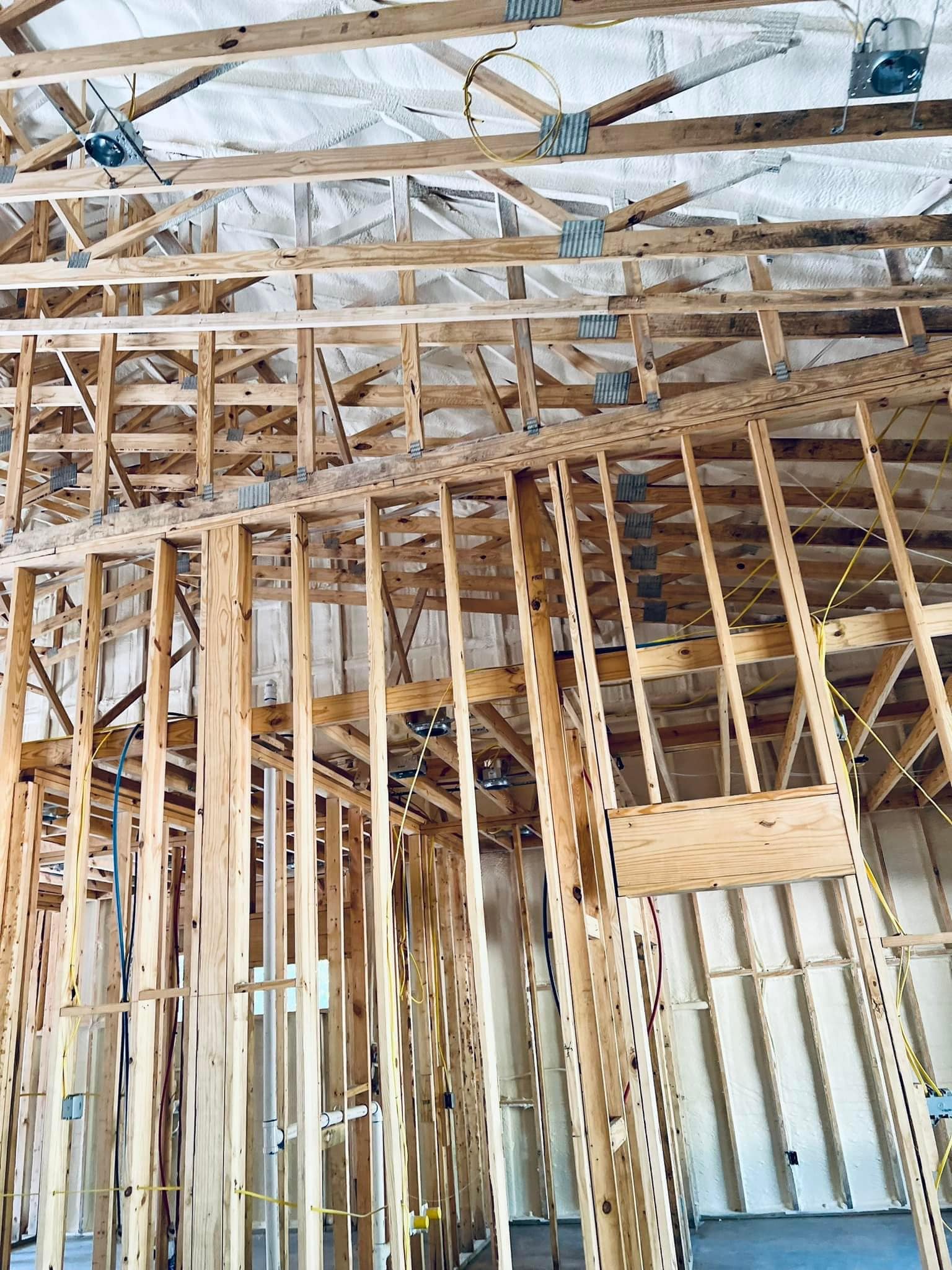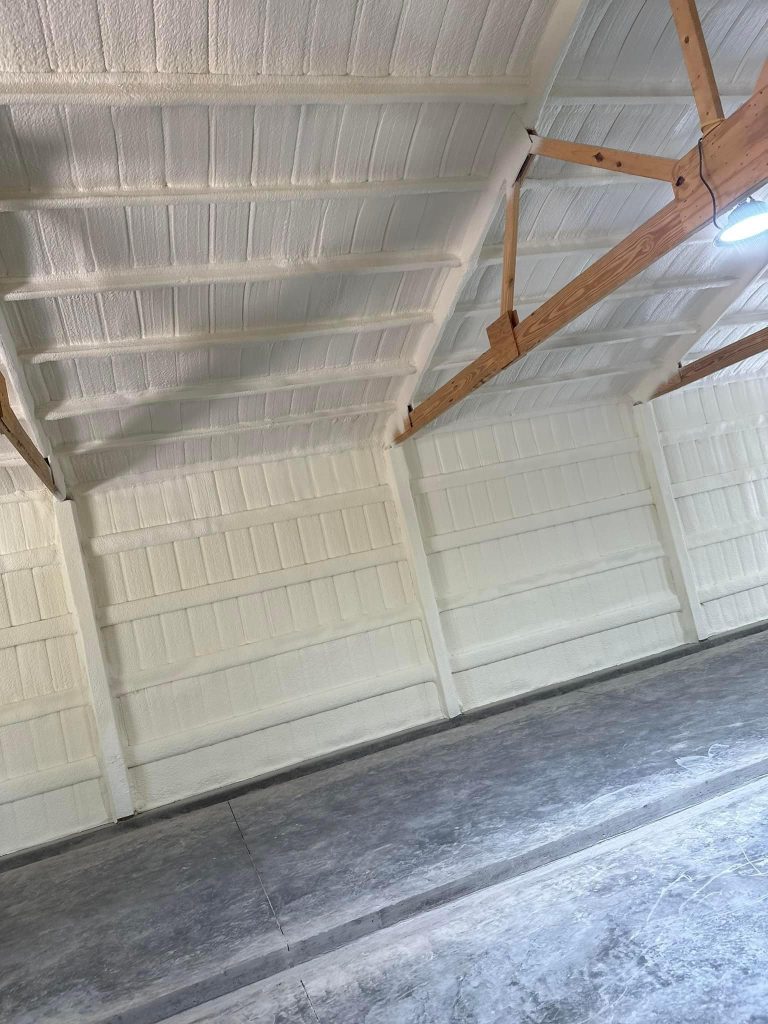
Insulation installation disrupts daily life the least when professionals use methods like blown-in cellulose or fiberglass, which require small access holes instead of tearing down walls. Spray foam options also work well, expanding into spaces through targeted entry points without major structural changes. These approaches keep noise low, limit dust, and allow residents to stay in the home during the process. In Little Rock, where homes often face humid conditions, such techniques ensure quick completion, often in a single day for attics or walls.
To help you understand and implement these methods, this guide covers preparation, suitable insulation types, local climate factors, and key decisions to help homeowners proceed confidently. Information draws from hands-on work with Arkansas residences, where crews have fitted insulation into existing structures while families continued routines.
Blown-in insulation stands out for its efficiency. Workers drill small holes, about two inches wide, into walls or ceilings, then blow material into cavities using a hose. This method avoids removing drywall or siding. Fiberglass follows a similar path, with loose-fill versions pushed into place via those same openings. Spray foam adds another layer; it fills gaps precisely, hardening fast to seal air leaks.
In practice, a typical job starts with setup in the morning. Crews cover floors with drop cloths and use negative air machines to contain particles. By afternoon, holes seal up, leaving no trace. Homeowners report staying comfortable, with only brief relocations for attics. As a bonus, schedule work during milder seasons, like spring, to avoid extra strain from Arkansas heat on equipment and workers.
Clear the area around targeted spaces first. Move furniture from walls by a few feet and remove pictures or shelves. For attics, shift boxes to one side. Seal off rooms with plastic sheeting if dust concerns you, though modern tools keep it minimal.
Check for pests or moisture issues beforehand. Inspect attics for rodent signs and walls for leaks, as these can complicate fitting. In Little Rock homes, where humidity averages 70% in summer according to National Weather Service, drying out damp spots prevents mold growth under new insulation.
To ensure a smooth process without delays, gather permits if needed; Pulaski County requires them for major electrical ties, but simple retrofits often skip this. Document your home’s layout to point out utilities like pipes or wires.
Different materials suit various home parts. Blown-in cellulose comes from recycled paper, treated for fire resistance. It packs tightly into irregular spaces. Fiberglass offers similar ease but comes in batts for quick attic drops if access exists. Spray foam, either open or closed cell, provides superior sealing for Arkansas’s variable weather.
A table below compares these options based on disruption level, cost, and performance in humid climates.
| Insulation Type | Disruption Level | R-Value per Inch | Cost per Sq Ft (Materials Only) | Best for Little Rock Homes |
|---|---|---|---|---|
| Blown-in Cellulose | Low (small holes) | 3.2-3.8 | $0.60-$1.20 | Attics, walls with humidity control |
| Loose-Fill Fiberglass | Low (blower access) | 2.2-2.7 | $0.40-$0.80 | Crawl spaces, quick retrofits |
| Closed-Cell Spray Foam | Very Low (drilled spots) | 6.0-7.0 | $1.00-$2.00 | Sealing gaps in older structures |
| Open-Cell Spray Foam | Low (expands in place) | 3.5-3.8 | $0.50-$1.00 | Soundproofing with air flow |
Data from U.S. Department of Energy highlights how spray foam cuts energy use by up to 20% in southern states like Arkansas.
Bonus Tip: Test air quality post-install; use a simple meter to confirm no off-gassing from foams lingers.
Little Rock experiences hot, humid summers and occasional winter chills, with average highs of 92°F in July and lows of 31°F in January, per NOAA Climate Data. Insulation must resist moisture to prevent rot. Closed-cell foam excels here, as it repels water better than fibrous types.
As discussed in preparation, local homes, often built mid-century with brick exteriors, benefit from wall retrofits that avoid siding removal. Attic venting pairs well with blown-in to manage heat buildup, reducing AC loads by 15%, according to a Energy Star report. Focus on R-38 for attics to meet Arkansas building standards.
Workers adapt by using dehumidifiers onsite, ensuring materials stay dry during humid days.
Assess your home’s age and structure. Older Little Rock bungalows may hide knob-and-tube wiring, which needs updates before insulation to avoid fire risks. Measure current insulation levels with a probe tool; if below R-19 in walls, upgrades pay off.
Budget for unexpected finds, like asbestos in pre-1980s homes—test samples cost $30-50. Weigh energy bills; Arkansas residents save $200 yearly on utilities with proper insulation, based on EIA data.
Think about long-term comfort. Does noise from Pulaski traffic bother you? Acoustic properties in some foams help. Review contractor credentials through the Better Business Bureau for reliable work.

Most jobs wrap up in 4–8 hours, depending on square footage.
Dust control is managed with HEPA vacuums, which keep the process clean and minimize post-installation cleanup.
Drilling without pros can damage studs or wiring, leading to costly repairs. Professionals use thermal cameras to spot voids accurately, ensuring safe and effective installation.
Bonus Tip: After installation, monitor indoor humidity with a gauge; aim for 30-50% to keep insulation effective year-round.
Minimal disruption comes from targeted methods like blown-in and spray foam, fitting well into Little Rock’s climate needs. Preparation clears paths, while type selection matches home specifics for lasting results. Decisions hinge on structure checks, budgets, and energy goals. Evaluate your setup against these points to plan effectively.
Contact LMC Insulation at (479) 351-6175 or [email protected] to discuss options tailored to your Little Rock property. Crews focus on efficient approaches that keep routines intact, drawing from local experience to ensure smooth outcomes. Schedule a no-obligation assessment to review your needs.
A 1,500 sq ft house sees completion in one day. Crews arrive early, finish patching by evening, allowing immediate use of spaces.
Yes, efficient insulation boosts appeal. Appraisers note energy features add 5-10% to resale prices in the region, per local real estate trends.
Absolutely, if rooms stay sealed. Noise levels match a vacuum cleaner, and odors from foams dissipate quickly in ventilated areas.
Layer blown-in over them for added R-value. This combo handles Little Rock’s sun exposure without removing existing setups.
Check with Pulaski County inspectors. R-30 minimum for attics complies, and pros verify during jobs to avoid violations.